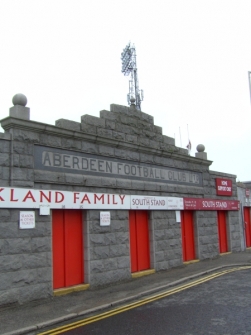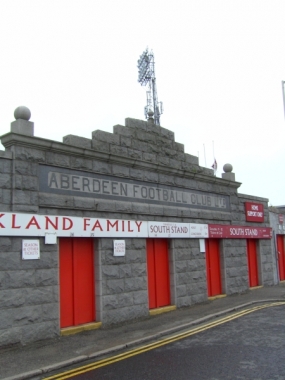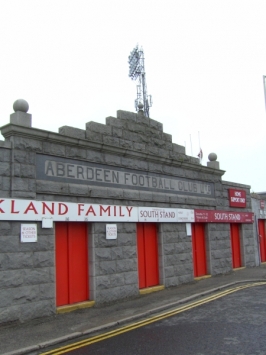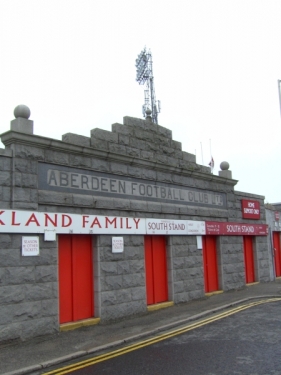Hollywood And The Bomb – or Trivialising a Nuclear Holocaust 1945-1990 – Part 3.
Voice’s Dave Watt lifts the lid on the somewhat shady influences at work at the highest levels of post-war US government when McCarthyism and ‘Commie plot’ paranoia was rife. Not even Hollywood’s cinematic art was safe, it seems.
This final section of the series concentrates mainly on Hollywood and the Bomb in the 1970s and 80s with occasional trips across the Atlantic to compare their treatment of the subject with British filmmakers.
The 1970s : An decade of détente, Strategic Arms Limitation Talks, humiliating end of Vietnam War for the US and the controversial deployment of short and medium range nukes amongst a largely unwilling European population but with the usual connivance of their governments.
The last instance of using nuclear war as a theme in the 1960s was curiously in the film Planet of The Apes (1968) where the human civilization is revealed to have been destroyed by a nuclear war thereby leaving the planet to the apes.
After this there was a largish gap in the 1970s until: Twilight’s Last Gleaming in 1977 starring Burt Lancaster and Richard Widmark. It tells the story of Lawrence Dell, a renegade USAAF general, who escapes from a military prison and takes over an ICBM silo near Montana, threatening to launch the missiles at the USSR and start World War III unless the President reveals the real reasons why America fought for so long in Vietnam. Control of The ICBM silo is duly recovered by the hero and some special forces sub-heroes although the audience are left in no doubt about the big business interests profiting from the US’s extended involvement in Vietnam.
The 1980s
With the appearance of Ronald Reagan and Margaret Thatcher on the scene in 1979/81 international relations took a turn for the worse with much sabre rattling, tub thumping and bear baiting of the mid-1950s variety (and the generation of an unpleasant ‘if you’re not 100% for us you’re against us’ mentality). Thatcher began this with Exercise Square Leg in 1980 despite huge protests by CND and other progressive organisations against it.
However, the campaigners against these chest beating exercises in fatuous optimism refined their strategies and Exercise Hard Rock in 1981 was cancelled by a massive CND campaign with 20 out of 54 county councils refusing to take part and many major cities declaring themselves Nuclear Free Zones.
It plays the devastation with a rather light hand – a bit like most US disaster movies with some photogenic survivors slightly mud and bloodstained
The next film with a nuclear theme was: The Day After (1983) which portrayed a fictional nuclear war between NATO forces and the Warsaw Pact that rapidly escalates into a full scale exchange between the United States and the Soviet Union, focusing on the residents of Kansas and Missouri, as well as several family farms situated next to nearby nuclear missile silos.
It plays the devastation with a rather light hand – a bit like most US disaster movies with some photogenic survivors slightly mud and bloodstained in general although Jason Robards does develop an unpleasantly realistic radiation sickness near the end.
It was very lightweight (like most Hollywood offerings) – in fact, probably the most horrendous shots of a nuclear attack in a Hollywood offering is in Terminator 2(1991) where a children’s play area is shown during a nuclear blast. However in ‘The Day After’ this is pretty sanitised and one gets the impression that help will soon arrive and everything will be back to normal.
Slightly more thought provoking was the film Special Bulletin.which was an American made-for-TV movie first broadcast in 1983 The film has no opening credits Instead, the program begins with a promo for a typical daytime morning lineup: previews of various shows, and a catchy network jingle, “RBS: We’re Moving Up!” Suddenly, an ominous “Special Bulletin” slide appears on the screen, with an announcer saying “We interrupt this program to bring you a Special Bulletin from RBS News.” It shows how a local TV crew, covering a dockworkers’ strike, become caught in the middle of a firefight between the Coast Guard and some people on board a tugboat sitting at a dock in Charleston, South Carolina.
This extraordinary TV movie — shot on video, to make it resemble a news broadcast — shows us how network news might cover a group of terrorists holding a city hostage with a nuclear bomb and in doing so creates extraordinary tension while also getting in subtle and pointed digs at the media.
The government tries to fool the insurgent group and storm the tugboat. The attempt fails disastrously and there is a nuclear detonation.
Interestingly, when this was shown, despite a disclaimer on air there was a certain amount of panic in the Charleston area
The final shots are of a female reporter and her cameraman trapped on a nearby old aircraft carrier with huge fires blazing in the background and, clearly stunned and dazed, she is terrified of imminent radiation sickness. The cameraman then replays the detonation in harbour which contains nothing but a raging firestorm. At this, the TV anchor breaks down on air crying out and weeping.
There is a break and the next shots are from three days later where the news, with the typical banality of TV news, has gone on to cover all the other events around the world (strikes in Poland, a World Bank announcement) which have continued to occur despite the destruction of Charleston.
Interestingly, when this was shown, despite a disclaimer on air there was a certain amount of panic in the Charleston area when the film was originally shown on TV.
Back in the UK, the next film up was Threads (1984) – a BBC television play set in the city of Sheffield depicting the effects of a nuclear war and its aftermath on the United Kingdom. The premise of Threads was to hypothesise the effects of a nuclear war on the United Kingdom after an exchange between the Soviet Union and the United States escalates to include the UK.
The primary plot centres on two families: the Kemps and the Becketts — as an international crisis erupts and escalates. As NATO and the UK prepare for war, the members of each family deal with their own personal crises. Meanwhile, a secondary plot centered upon Clive Sutton, the Chief Executive of the City of Sheffield serves to illustrate for the viewer the UK Government’s then-current continuity of government arrangements. The balance of the film details the fate of each family as the characters face the medical, economic, social, and environmental consequences of a nuclear war.
Both the plot and the atmosphere of the play are extremely bleak with the UK ending up as a declining medieval society in the throes of a nuclear winter.
Despite the apparent extreme bleakness Threads was actually based on the results for the previously mentioned (and almost unbelievably optimistic) Exercise Square Leg instigated by the Tories in the 1980 in which the Soviets obligingly decide to nuke bizarre out-of-the-way places like Eastbourne but not Central London. In addition, whereas a Soviet attack on the UK could engender up to 1000 megatons, Square Leg was based on an attack involving 239 megatons.
There’s an equally childish disposition towards happy endings despite the mega-deaths on display
Despite this the mortality figures were estimated at 29 million (53% of the population); serious injuries at 7 million (12%); short-term survivors at 19 million (35%) so even at Thatcher’s mindlessly optimistic best we’d all have had it.
The last film on the list is also a British film and is that unusual combination a rather harrowing cartoon.
When the Wind Blows 1986 depicts a nuclear attack on the UK by the Soviet Union from the viewpoint of a retired couple, Jim and Hilda Bloggs. [Voices by John Mills & Peggy Ashcroft] The Bloggs live in rural Sussex and are confused regarding the nature and seriousness of their situation which is sometimes used to generate gentle comedy as well as darker elements. As the film progresses their situation becomes steadily more hopeless as they suffer from the effects of radiation sickness. The film ends on an extremely moving note, with both Jim and Hilda dying as they pray.
CONCLUSION – Hollywood : There was a period of more thoughtful filmmaking in the 60s and 70s but as usual it’s been lots of glitz, glorious technicolour, wonderful special effects, very little in the way of plot lines with rather childish bipolar worldviews of the US as basically good and Johnny Foreigner regarded as rather murderous and irrational demons. There’s an equally childish disposition towards happy endings despite the mega-deaths on display.
British films of the period tended to be rather more thoughtful, socially realistic and less given to mindless flag wagging – in general, somewhere in between the more cerebral European mainland films produced on the same subject and the rather shallow US films made during this period.





